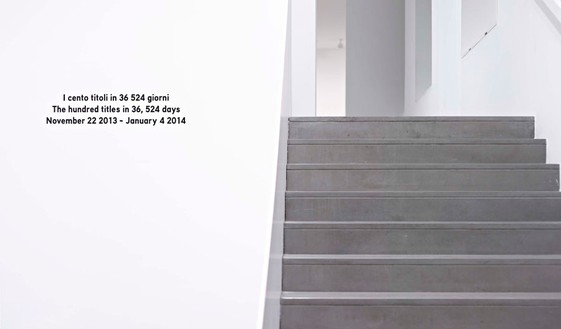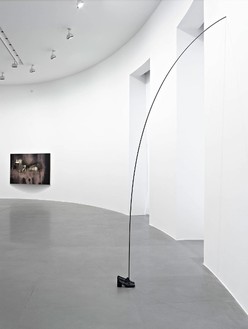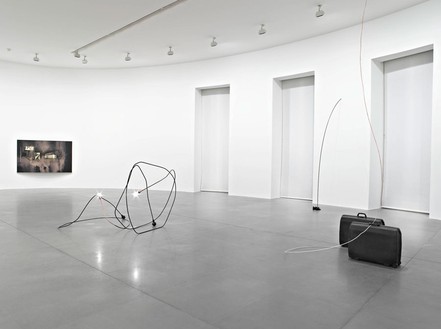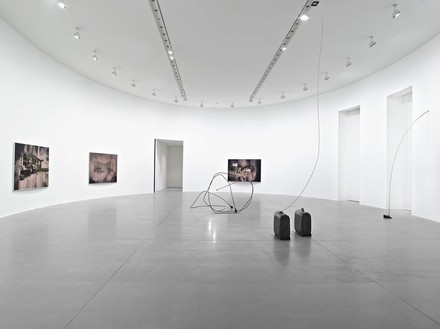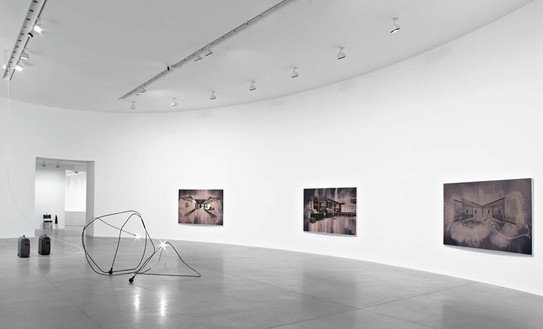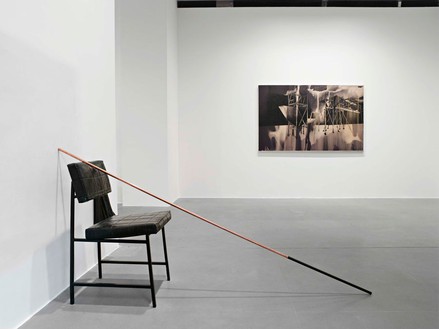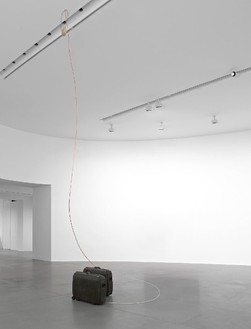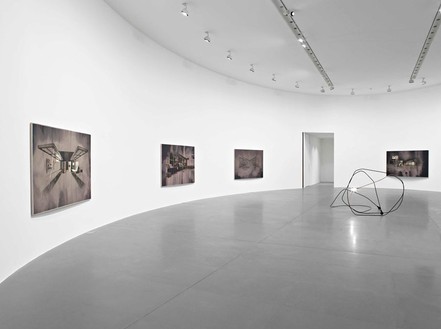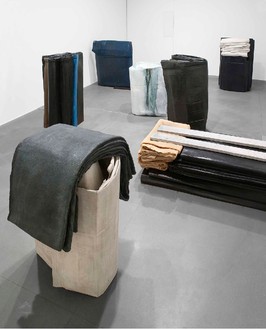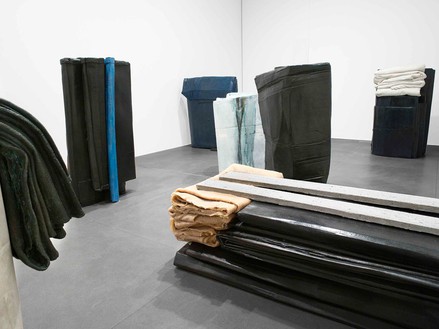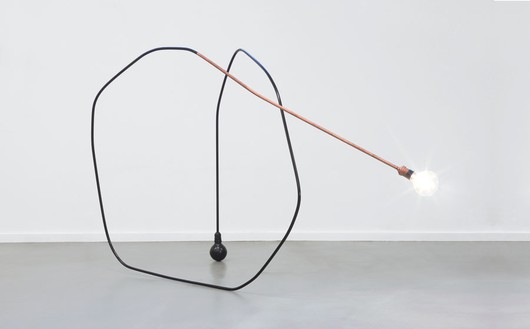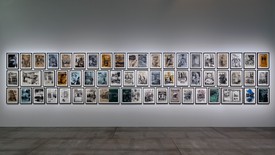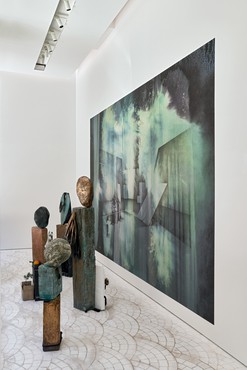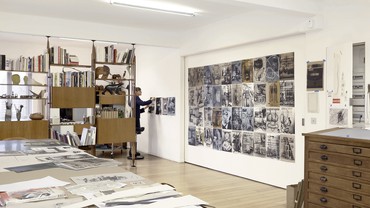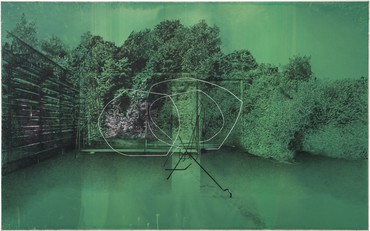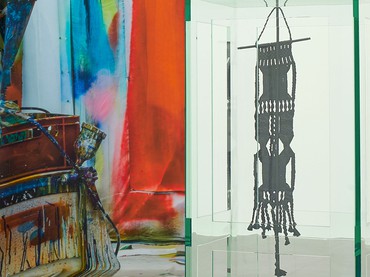About
In my view the rational and irrational, the mind and senses, always mingle. What I like is to let them slip one into the other, and be complementary rather than opposite.
—Tatiana Trouvé
Gagosian Rome is pleased to present Tatiana Trouvé's first exhibition in Rome.
Announced with a sealed and folded stained handwritten note, Trouvé's exhibition makes time its primary material, from the title that evolves over the years and days of a century to sculptural situations alluding to states of constitutive and deconstitutive transformation.
In disquieting, entropic mis-en-scenes, Trouvé limns the boundaries between the mental and physical where material space and form converge with immaterial time and memory. Her situations combine intricate scenographic drawings, sculptures both linear and three-dimensional, and spaces that hint at invisible dimensions. Whether found or created, Trouve's "environmental dramas" are melancholy yet highly charged, palimpsests containing echoes of other lived spaces and realities, which oscillate between the real, the imaginary and the phantasmic.
Per me il razionale e l'irrazionale, la mente e i sensi sono sempre connessi. Mi piace lasciarli scivolare l'uno nell'altro, e che siano complementari piuttosto che opposti.
—Tatiana Trouvé
Gagosian Gallery è lieta di presentare la prima mostra di Tatiana Trouvé a Roma.
Annunciata con un invito sigillato e scritto di proprio pugno, la mostra di Tatiana Trouvé fa del tempo la sua materia prima: dal titolo che enumera i giorni di un secolo a situazioni scultoree che alludono agli stadi di una trasformazione costruttiva e decostruttiva.
In inquietanti e distopiche mis-en-scenes, Trouvé delinea i confini tra il fisico e il mentale, dove lo spazio materico e la forma convergono con il tempo immateriale e la memoria. Le sue installazioni associano complessi disegni scenografici, sculture lineari e tridimensionali, e spazi che accennano a dimensioni invisibili. Che siano casuali o creati, i “drammi ambientali” di Trouvé, malinconici eppure estremamente intensi, riecheggiano altri spazi e realtà vissute, oscillando tra il reale, l’immaginario e l’illusorio.
Nella mostra di Roma Trouvé destabilizza un preciso progetto tecnico con l’accidentale, alludendo ad un misticismo quasi sciamanico, come suggerisce il titolo dell’opera Il Guardiano (2013), che vigila sulla mostra quale sentinella assente di un segreto nascosto nel muro.
Strutture bidimensionali, sia reali che immaginarie, emergono minacciosamente da elaborati disegni in grafite su fondi scuri sbiancati. In queste vorticose immagini chimeriche, oggetti familiari e i loro ambienti si trasformano in misteriose meta-realtà. Gli opposti abbondano, come ne I tempi doppi, sculture in rame e bronzo patinato, che si stagliano nello spazio, alle cui estremità appaiono due lampadine, una illuminata e l’altra spenta. La mostra si conclude con Refoldings, fusioni in bronzo, cemento e cera, vivacemente colorate attraverso complessi processi di ossidazione, per emulare gli imballaggi dismessi di cui rappresentano i calchi.
Tatiana Trouvé è nata a Cosenza, Italia, nel 1968, e vive e lavora a Parigi. Le sue opere sono state incluse in collezioni pubbliche: Georges Pompidou, Parigi; Musée d'Art Moderne de la Ville de Parigi; Kunsthaus Graz, Austria; e il Kunstverein Hamburg, Germania. Tra le più importanti mostre museali si annoverano: “Double Bind,” Palais de Tokyo, Parigi (2007); “4 between 3 and 2,” Centre Georges Pompidou, Parigi (2008); “A Stay Between Enclosure and Space,” Migros Museum, Zurigo (2009–10); e “Il Grande Ritratto,” Kunsthaus Graz, Austria (2010). Una retrospettiva “I Tempi Doppi” aprirà al Kunstmuseum Bonn, Germania, dal 29 gennaio al 4 maggio 2014.
Si prega di partecipare alla conversazione con Gagosian Gallery su Twitter (@GagosianRome) e su Instagram (@gagosiangallery) tramite l'hashtag #TatianaTrouve.
Share
Artist
Tatiana Trouvé: Le grand atlas de la désorientation
In this video, Tatiana Trouvé provides an overview of her latest installation, presented at the Centre Pompidou, Paris. The exhibition, whose title translates to The Great Atlas of Disorientation, includes a selection of drawings and sculptures that create fantastical landscapes where reality engages in infinite exchanges with its doubles.
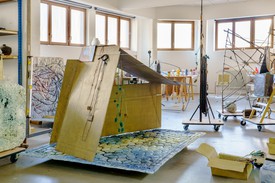
In Conversation
Tatiana Trouvé and Jean-Michel Geneste
Tatiana Trouvé speaks with Jean-Michel Geneste, archaeologist and curator, about the paradoxes of her practice: absence and presence, the ancient and the contemporary, the natural and the human-made.
Tatiana Trouvé: The Residents
Tatiana Trouvé discusses her installation The Residents (2021), commissioned by Artangel for the exhibition Afterness on Orford Ness, a former military testing site in Suffolk, England
Behind the Art
Tatiana Trouvé: In the Studio
Join the artist in her studio as she speaks about her new series of drawings, From March to May. Trouvé describes the genesis of the project and the essential role its creation played in keeping her connected with the outside world during the difficult months of pandemic-related lockdown.
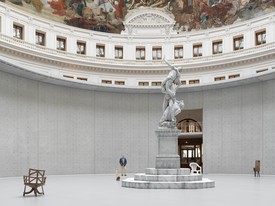
Bourse de Commerce
William Middleton traces the development of the new institution, examining the collaboration between the collector François Pinault and the architect Tadao Ando in revitalizing the historic space. Middleton also speaks with artists Tatiana Trouvé and Albert Oehlen about Pinault’s passion as a collector, and with the Bouroullec brothers, who created design features for the interiors and exteriors of the museum.
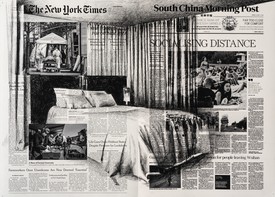
Tatiana Trouvé: From March to May
A portfolio of the artist’s drawings made during lockdown. Text by Jesi Khadivi.
News
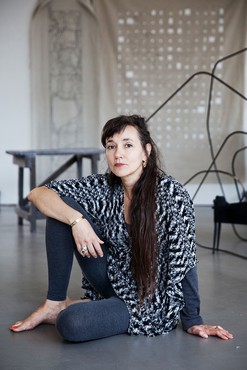
Artist Spotlight
Tatiana Trouvé
April 6–12, 2022
In her cast and carved sculptures, site-specific installations, and large-scale drawings, Tatiana Trouvé assesses the relationship between memory and material, pitting the ceaseless flow of time against the remarkable endurance of common objects. She invents, even inhabits, environments that straddle studio, street, landscape, and dream.
Photo: Roberta Valerio
